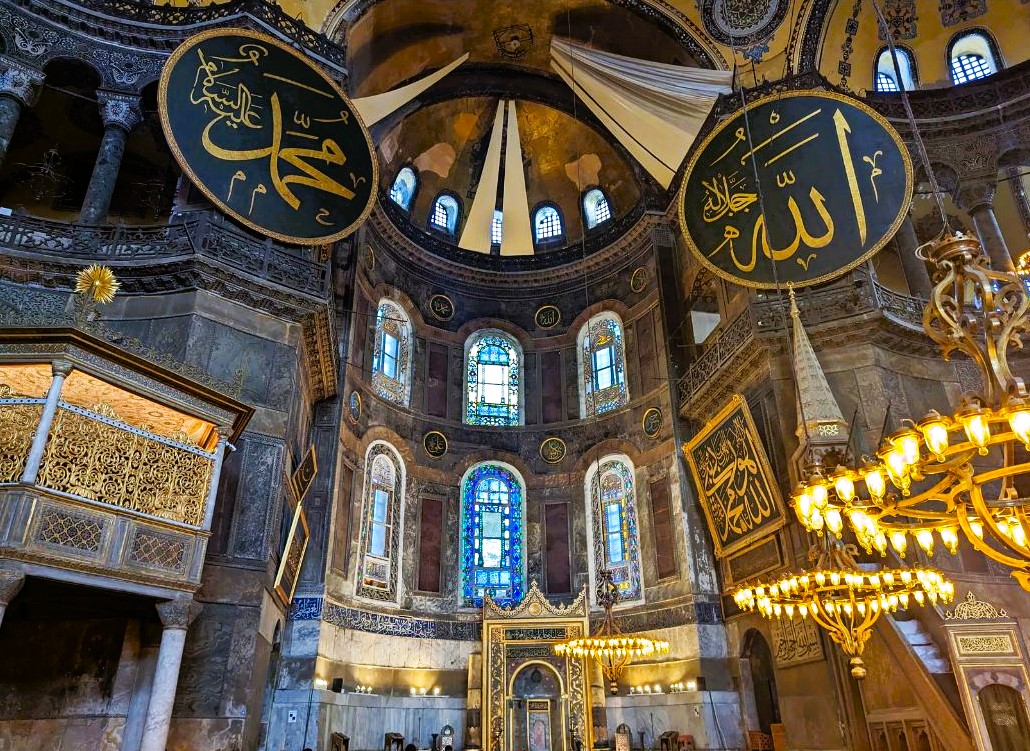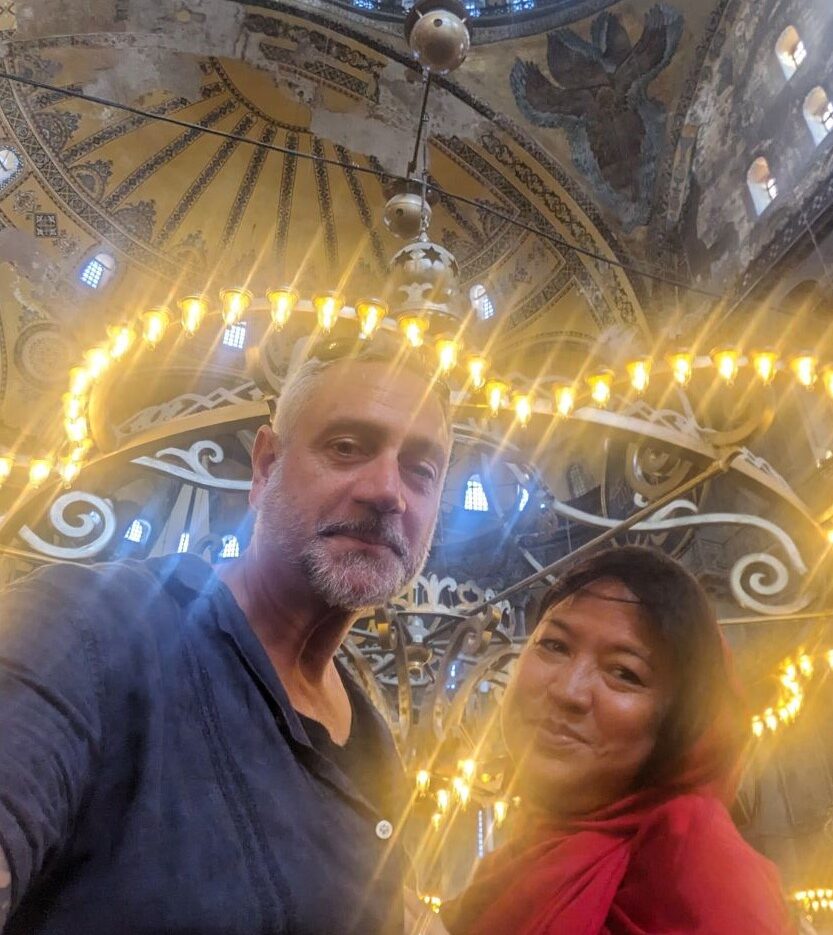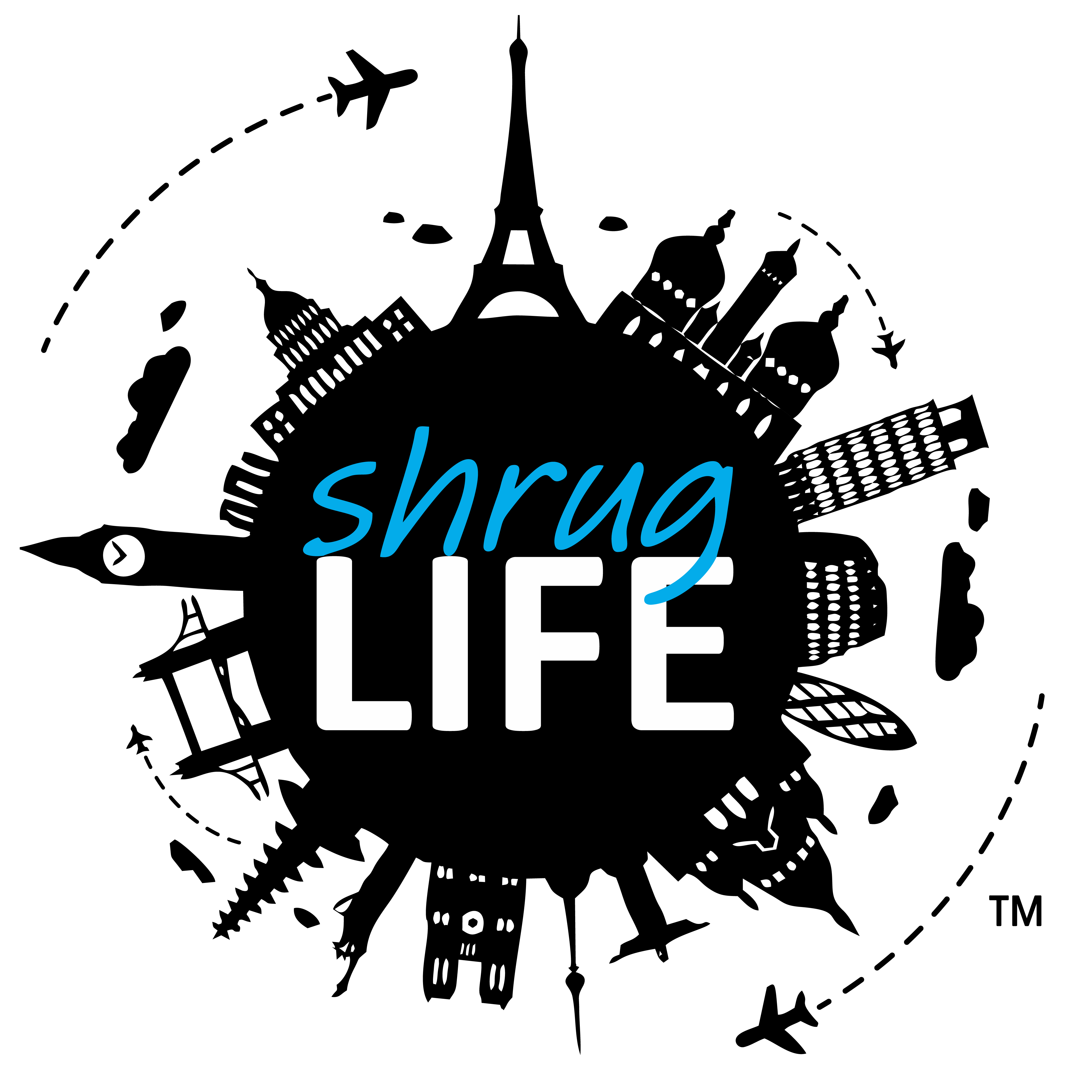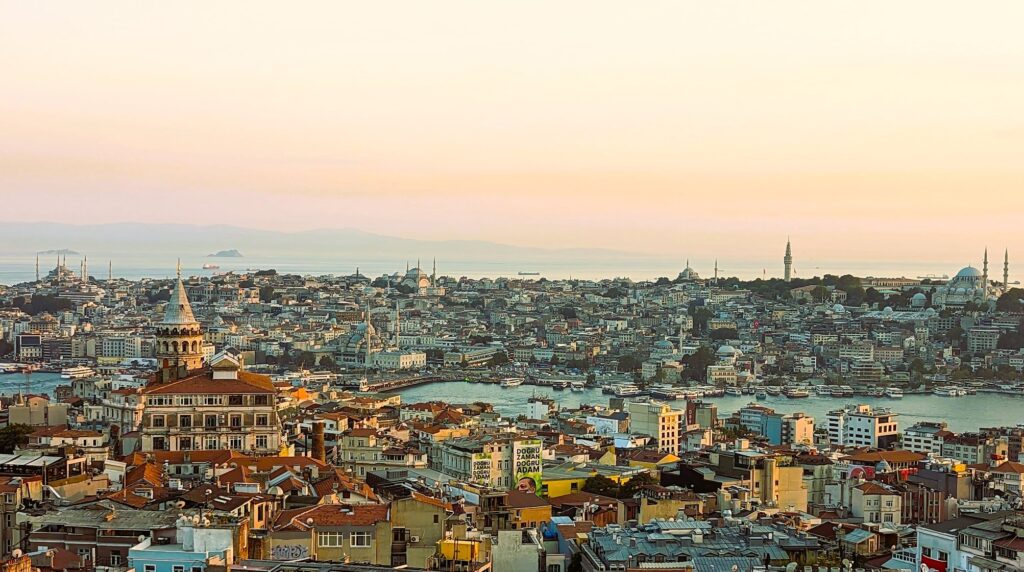
A Call to Prayer
SL Feature: by Deborah Brand Probst
When I turned 40, I declared to all my friends, ‘Well, I guess I better start liking cruises.’ So, I planned this elaborate three-week vacation to island-hop the Greek Islands, culminating in a long stint in a fabulous villa I had rented in Santorini. But before that, being consummate adventurers, we started with a long weekend in Istanbul.
And while I adored every minute of that sun-kissed, olive and wine-filled Greek and Turkish island-hopping adventure, I fell head over heels for Istanbul. ‘I could live here,’ I said to myself somewhat unfairly after only four days, while we waited to depart on our cruise. I don’t know why it took me so long to return after this revelation, but now here we are: Mark, eager to experience the city for the first time, and me, anxious to see if it still lived up to the incredibly high expectations I had formed in my memory. And it did.
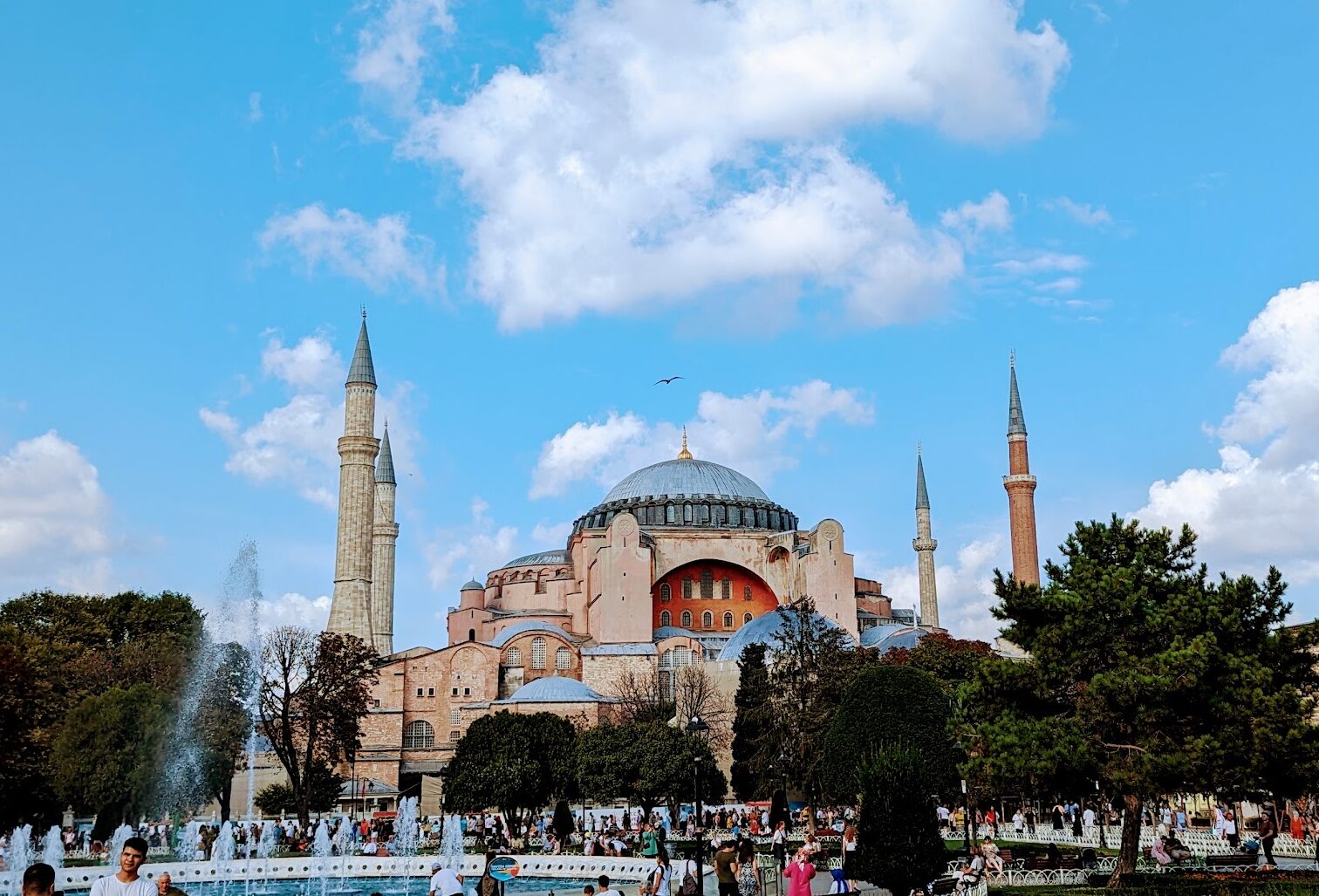
“In Istanbul, you can turn a corner and find something extraordinary”
– Anthony Bourdain
We flew in from Albania on a crazy redeye that departed Tirana at 2:30 AM and arrived in Istanbul at 5:30 AM. We took the subway from the Asian side of the city, crossing the Bosphorus and the Golden Horn before finally reaching Beyoğlu, my favorite neighborhood from 15 years ago.
I was worried that Beyoğlu might have become overly touristic, filled with McDonald’s and Starbucks, or deteriorated into the urban blight that has plagued so many cities since the pandemic. However, I was relieved to find that it still retained the vibrant pedestrian energy I remembered. Yes, there were more tourists, and some areas had undeniably gentrified, but it still possessed that unique character – a bustling sea of people every day, a blend of international influences and authentic Turkish culture. It felt like a village within a metropolis, perched on a hill yet close to the sea, inland yet with a maritime spirit.
Somehow, Istanbul embodies everything I love about cities, and Beyoğlu encapsulates everything I cherish about city neighborhoods.
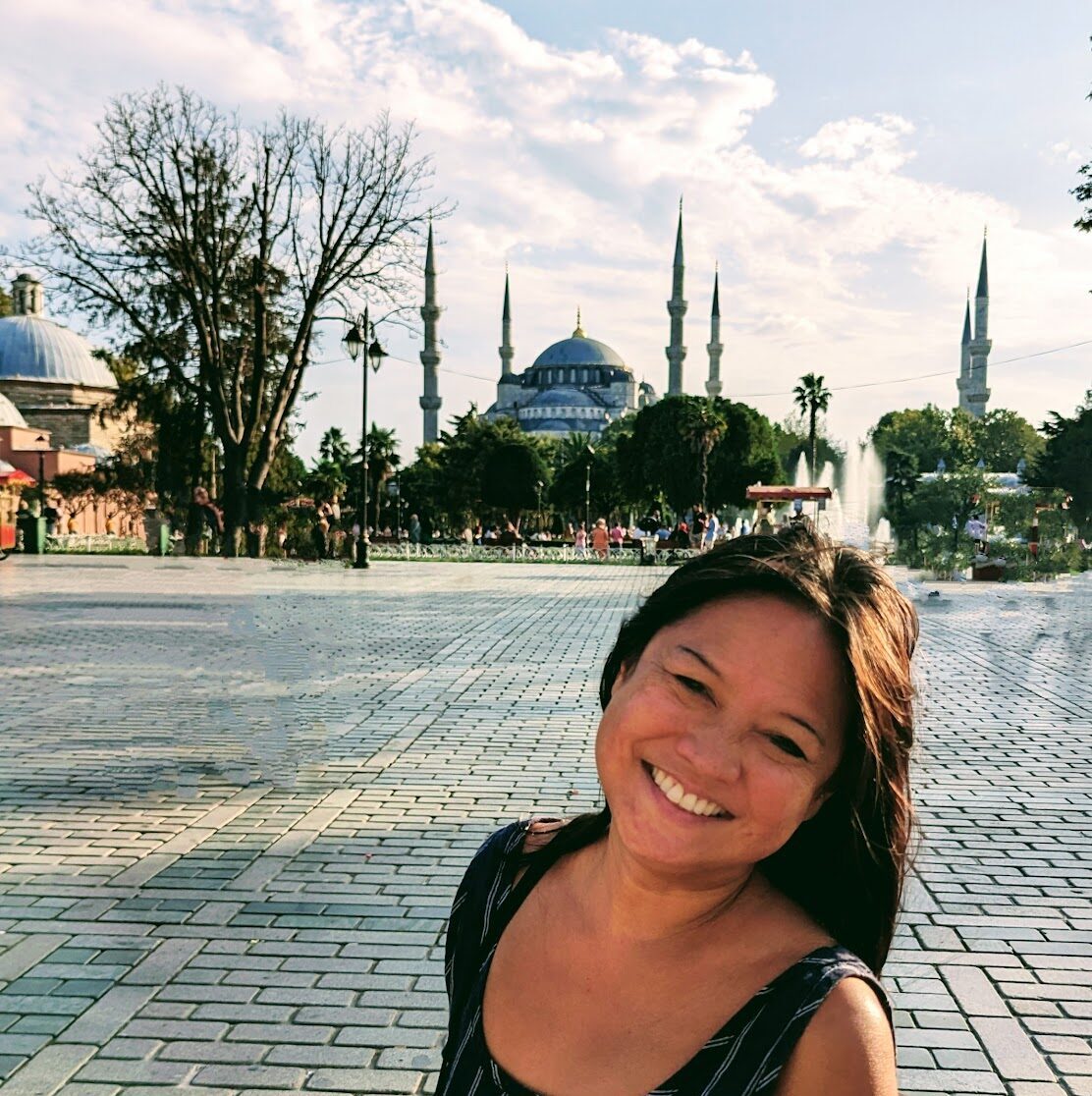
Not Asia Not Europe
We’ve all heard the clichés: Turkey is both Asian and European, a blend of both worlds. Geographically, it straddles both continents and boasts a rich history, having been part of the Roman, Byzantine, and Ottoman Empires. Its language, culture, and cuisine are a captivating fusion of European, Middle Eastern, and Asian influences. You can intellectually grasp these facts, but experiencing them firsthand is an entirely different matter.
Turkey is blessed with an incredible diversity of landscapes. Snow-capped mountains, part of the Himalayan range, offer opportunities for skiing. Its extensive coastline, encompassing over 8,000 kilometers along the Mediterranean, Aegean, Black, and Marmara Seas, boasts hundreds of idyllic islands. Inland, the terrain varies dramatically, from lush green plateaus to arid plains, showcasing a remarkable range of natural beauty.
This secular country, with a predominantly Muslim population, maintains a remarkable religious diversity. Istanbul, in particular, is a testament to this: mosques, churches, and synagogues coexist within close proximity. And while it was once known as Constantinople, it is undeniably Istanbul today.
This city, a captivating blend of East and West, embodies everything I love about urban life. Beyoğlu, with its vibrant energy and unique character, perfectly encapsulates the essence of a truly captivating neighborhood.
“If the Earth were a single state, Istanbul would be it’s capital.”
– Napolean Bonaparte
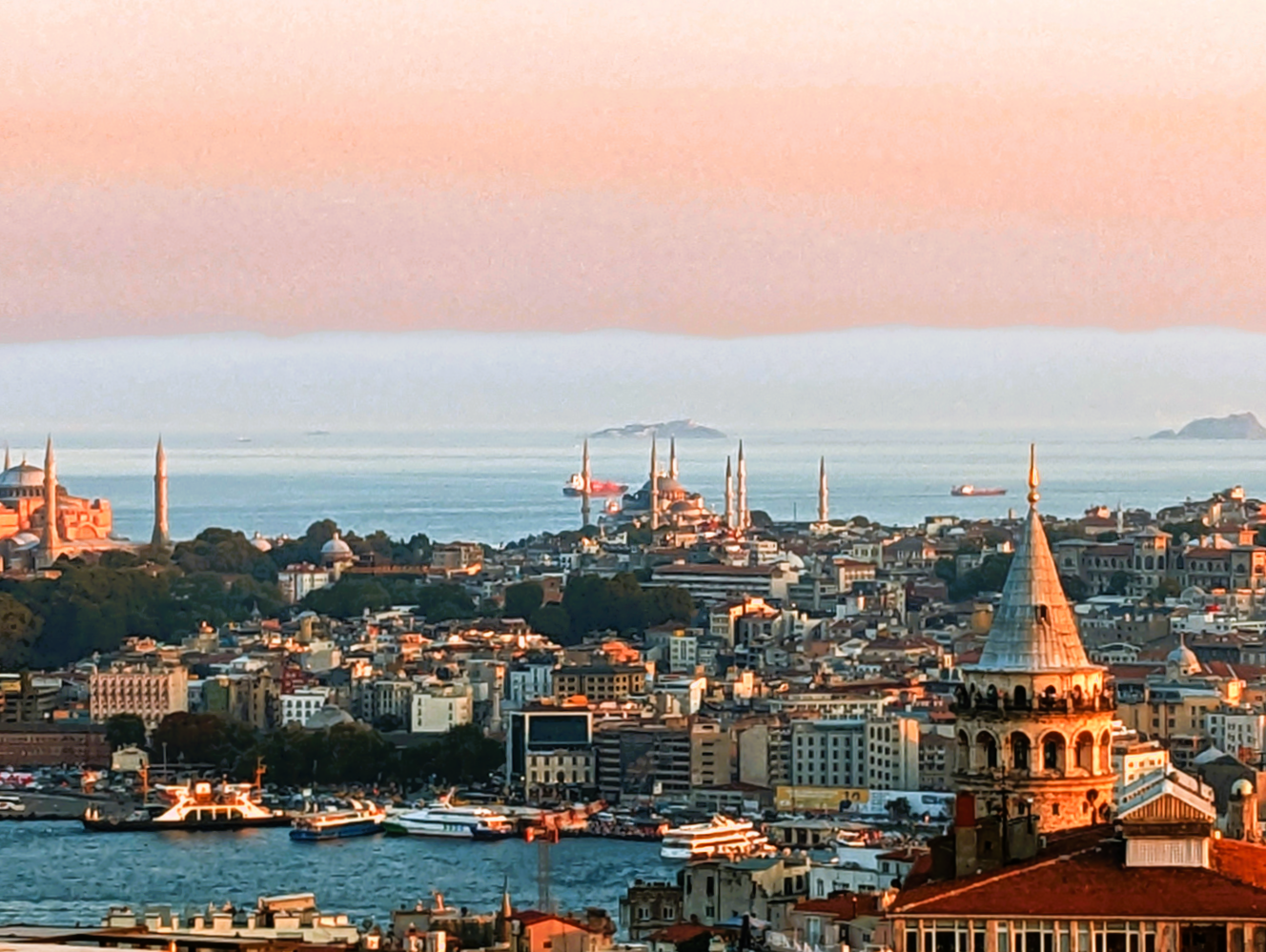
Rooftops and River Banks
The first time I was in Istanbul, it was the end of October, and it was just beginning to get a tiny bit chilly in the evenings. Now it’s early September, and it is HOT. The rooftops are buzzing with cool cocktail bars, perfect for Instagram-worthy photos, and beautiful international hipsters happy to oblige. The beaches are packed with sunbathers in bikinis and picnicking families. The Bosphorus is teeming with yachts and cruise ships. The bridges are lined with fishermen and tourists. This city knows how to flaunt its physical charms to the fullest, shamelessly showcasing its beauty to the world, with the glistening sea as its backdrop.
Magic Kingdoms and Arabian Nights
I read Arabian Nights as a little girl, falling asleep to tales of genies, tramps, and thieves, whiling away rainy days in the company of Scheherazade and sorcerers. These stories are supposed to take place in today’s Baghdad, Cairo, Damascus, and Isfahan, but in my mind, they unfold in Sultanahmet, the old part of Istanbul.
Sultanahmet boasts the Hagia Sophia, the Blue Mosque, the Grand Bazaar, the Cisterns, and a myriad of riches, all surrounded by minarets, a warren of tiny alleyways, and rooftop gardens that seem to weave together into a tapestry of stories that float on the blue waters like a magic carpet in the sky. It is otherworldly and very much of this world at the same time. This is the place I imagined as a little girl. I can just see Aladdin running through the streets, trying to escape after stealing some fruit from a vendor.
The Hagia Sophia is magical. Sunlight twinkles through her dome, casting soft fingers of light through the space and illuminating the intricate swirls of Arabic text and textures that adorn the walls. It’s more than just a building; it’s a feeling, a living, breathing monument on a hill. It’s far too simplistic to describe it merely as a converted mosque or church.

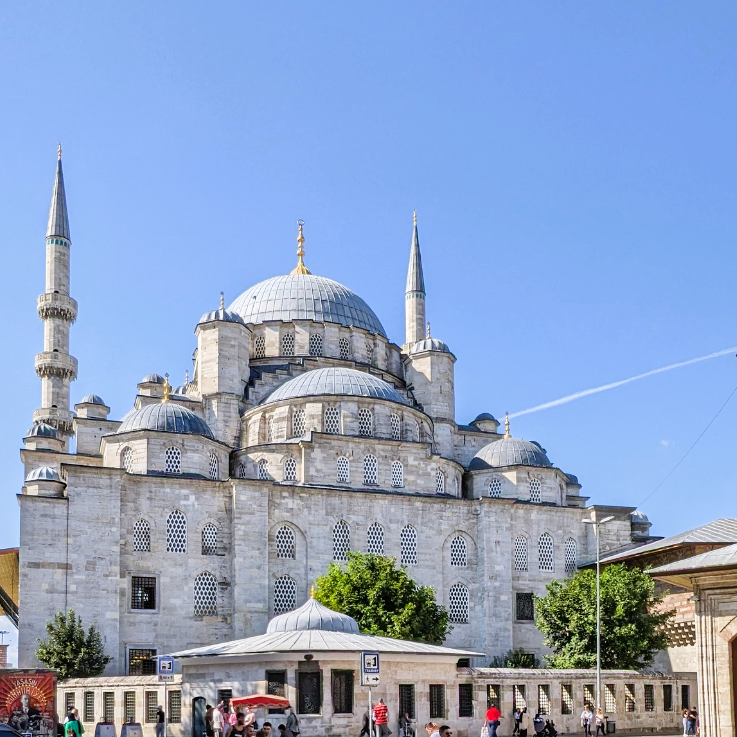
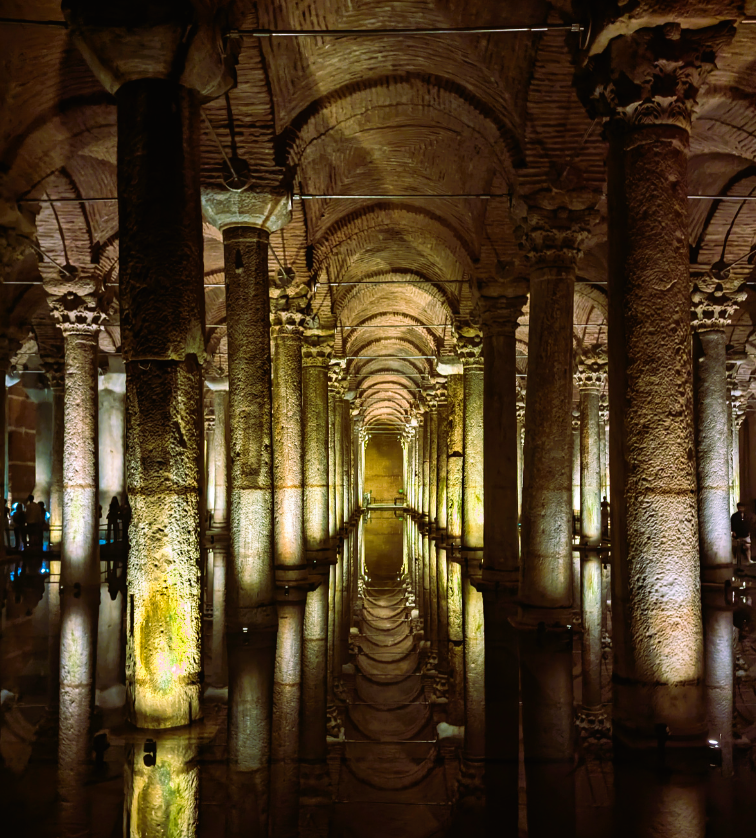
Descending into the cool depths of the Basilica Cistern, also known as the Yerebatan Sarnıcı, feels like entering a Dionysian underground cathedral. Hence the name. You almost expect to hear ancient spiritual hymns echoing through the cavernous space. Wandering through the majestic columns mirrored in the shimmering water, it stands as a breathtaking testament to the ingenuity of Byzantine engineering, a magnificent structure born from a simple necessity: to provide fresh water to the ancient city of Constantinople.
Emerging from the tourist throngs, you’re instantly immersed in the vibrant cacophony of Istanbul. Kittens follow you everywhere, adorably begging for scraps or simply curling up for a nap on a nearby bench. And wherever you turn, a glimpse of the sparkling sea beckons you down a narrow alleyway.
The Grand Bazaar, though contained within its impressive walls, overflows into the surrounding streets. Its influence extends far beyond the official boundaries, spilling uncontrollably in every direction. No longer confined to the trade of spices and Turkish delight, the bazaar now irreverently offers a dazzling array of goods, from cellphone cases to scarves and hats, all artfully arranged into picturesque displays, echoing the spirit of the ancient spice trade.
Days of wine and song
During the early mornings, I hear the muezzins call to prayer intermingled with the church bells. We’re staying right next to a Catholic church, and it’s a mystery when the bells actually chime. But like clockwork, the call to prayer sings its mournful song five times a day. Growing up in Malaysia, this sound is comforting to me. Even though I was raised Catholic, this familiar chant evokes memories of my childhood home.
Like Malaysia, Turkey is officially a Muslim country with a significant non-Muslim population. These diverse communities coexist peacefully with their Muslim neighbors and family members. It’s simply a part of the vibrant tapestry of Turkish life.
When you wander the streets of Beyoğlu at night, it’s easy to imagine yourself in Athens, London, Dublin, or even New York City. There’s a dynamic energy: hustlers and pickpockets, people selling roses, buskers, street vendors, drag queens, punk rockers, and groups of bachelorette party revelers. Live music fills the air. You hear Turkish music, of course, but also Elvis, John Mayer, and Coldplay. We stumbled upon a venue where a Turkish band was playing a heavy dose of 70s rock and roll – Led Zeppelin and Creedence Clearwater Revival. We later popped by another spot where the DJ was spinning a mix of Despacito, Shakira, and a little bit of Abba.
People are smoking hookahs, and the air is filled with the aromas of marijuana (highly illegal), cigars, and cigarettes. There’s also the enticing smell of roasting chestnuts, kebabs, grilled fish, and the occasional pungent waft from a seedy corner that has been temporarily converted into an impromptu restroom after a night of excessive beer, wine, and whiskey consumption.
The Persian poet Rumi also chose to write some of his poetry in Turkish to reach a wider audience.
Come, whoever you are … our threshold is not a threshold of despair – Rumi
You get the feeling all who wander are welcome here and we most certainly wander. And we feel welcome here.
